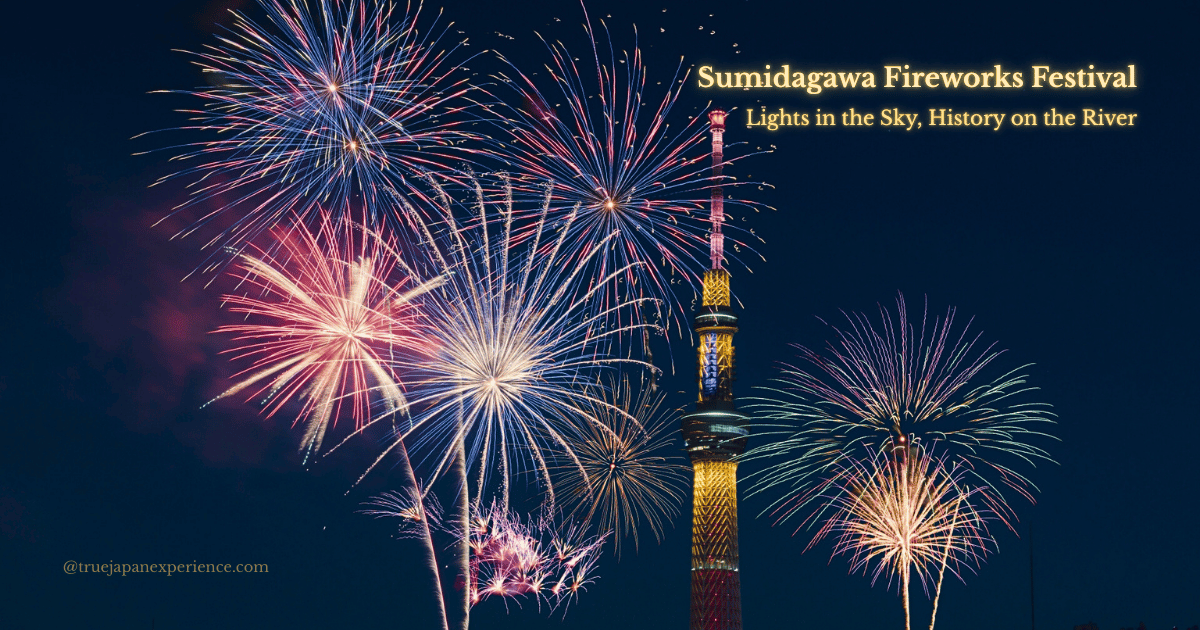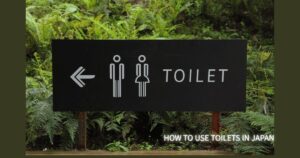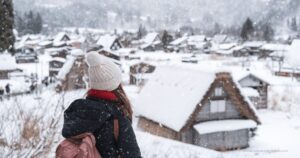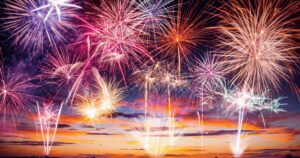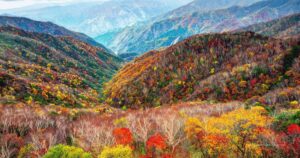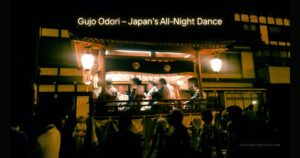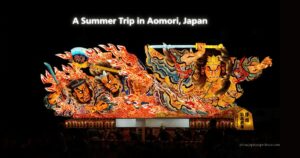Every summer, Tokyo’s night sky comes alive with dazzling colors during the Sumidagawa Fireworks Festival—one of Japan’s most iconic and historic celebrations.
With over 20,000 fireworks, a stunning riverside setting, and deep cultural roots dating back to the Edo period, this event offers a truly unforgettable experience for both locals and international visitors.
Whether you’re traveling for the first time or are a seasoned Japan lover, here’s everything you need to know about this legendary festival.
A Festival Rooted in History
The origins of the Sumidagawa Fireworks Festival trace back to 1733, during the Edo period.
Following a year of severe famine and disease, the shogunate organized a river festival to mourn the deceased and ward off future disasters.
Fireworks were launched during the event, marking the beginning of what would become a centuries-long tradition.
For many years, the event was known as “Ryogoku no Kawabiraki,” or the “Opening of the River at Ryogoku.”
After being suspended several times due to war and urban challenges, the festival was officially revived in 1978 under its current name.
Today, it remains a powerful blend of history, community, and modern entertainment, with pyrotechnic competitions that showcase the creativity of Japan’s top fireworks artisans.
Event Schedule and Venues for the Sumidagawa Fireworks Festival
The two venues allow a wide range of viewing locations along the river. The most convenient stations for accessing the venues are Asakusa Station for the first site and Kuramae Station for the second.
Due to heavy crowds and traffic control, arriving early is strongly recommended.
Best Places to View the Fireworks

The Sumidagawa Fireworks Festival attracts over one million spectators each year—and the viewing areas, while numerous, are never truly spacious or relaxed.
While some locations are technically “less crowded” than others, it’s important to understand that every spot will be packed.
If you’re attending, be prepared for shoulder-to-shoulder crowds, long waiting times, and limited personal space. That said, choosing the right spot can still make your experience smoother and more enjoyable.
Premium Viewing Spots (Reserved or Paid)
These locations offer some of the best vantage points, often with restricted access and limited capacity. They’re not immune to crowds, but they provide a bit more structure and comfort compared to free public spaces.
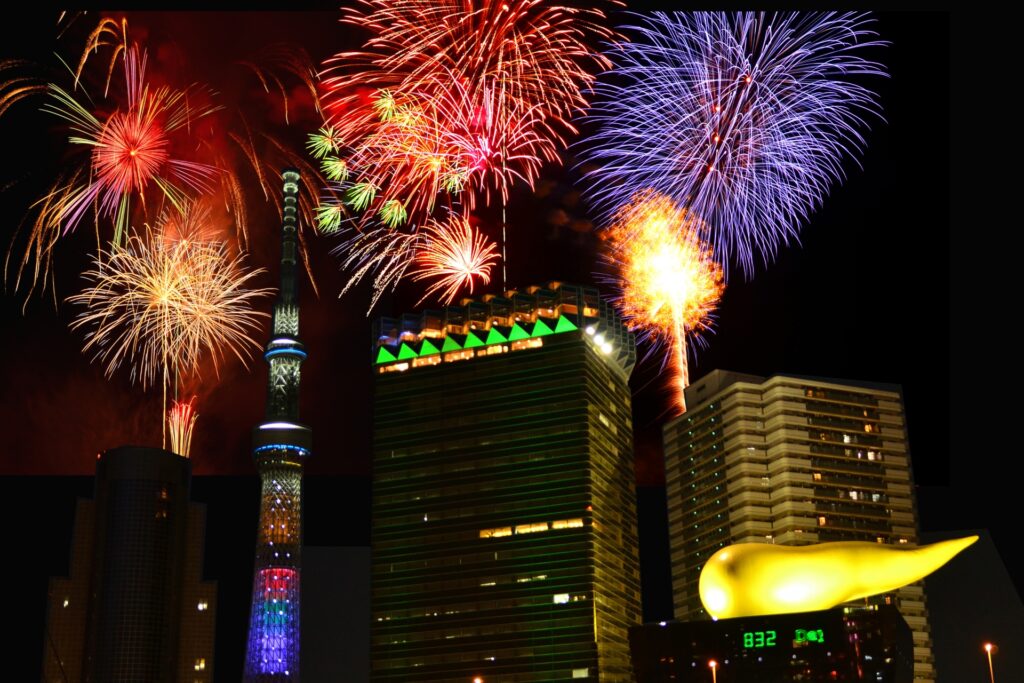
◆ Oyokogawa Water Park
Located on the 8th floor of Tokyo Solamachi near Tokyo Skytree, this rooftop garden is normally free and open to the public. However, on the day of the Sumidagawa Fireworks Festival, it transforms into a special premium viewing venue.
Each year, the space hosts exclusive ticketed events, such as the Walker Plus Premium Viewing Area, allowing only those with advance reservations to enter. The entire area becomes a closed-off, paid venue offering a relaxed and scenic experience far above the street-level chaos.
From here, spectators can lie on the grassy lawn and enjoy a close-up view of the fireworks from the festival’s first launch site. It’s one of the most comfortable and visually striking spots available—but only with a pre-purchased premium ticket.
Keep in mind that no general public access is allowed during the fireworks festival, so don’t expect to simply walk in on the day.
◆ Tokyo Skytree Observation Deck
Offers a bird’s-eye view of the fireworks from above the city—advance lottery-based reservation required
◆ Fireworks Cruise (Yakatabune)
Traditional boats offering meals, drinks, and front-row views from the river
・Prices range from ¥70,000 to ¥150,000 per person
・Includes course meals and drinks on board
・Some cruises offer views of both launch sites
・Reservations are available online and must be made early
Reservations: https://nawayasu.com/en
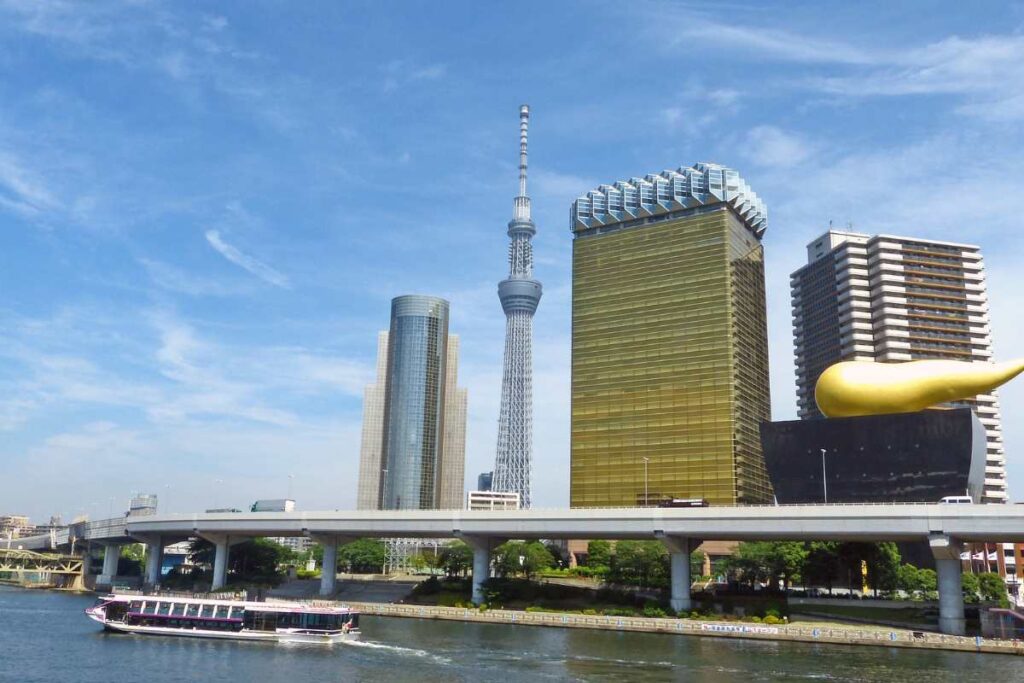
Some restaurants and hotels in the area also offer special fireworks viewing plans, which include reserved seats, course meals, or rooftop access.
These plans tend to sell out early, but they provide an excellent alternative for those who want to enjoy the event in a more private and comfortable setting.
Free Areas (Still Very Crowded, but Slightly More Manageable)
These locations do not require tickets, but you’ll need to arrive hours in advance to secure a viewing spot. Even so, expect dense crowds, limited visibility, and strict movement regulations.
◆ Yanakabashi Area
Quieter than major tourist zones, but still heavily crowded on event day
◆ Shioiri Park
Open space with amenities; popular with families, but not “spacious” by any means
◆ Higashi Shirahige Park
Hosts summer events alongside the fireworks; crowd control is enforced
◆ Sakurabashi Area
Popular among photographers, but standing room only and very limited movement
◆ Sensoji Temple Area
Great for atmosphere, but definitely not a calm viewing experience
To put it simply: there is no such thing as a quiet or spacious spot at Sumidagawa.
If you value comfort, consider a cruise or paid rooftop option. For all other areas, bring patience, arrive early, and embrace the energy of Tokyo’s most crowded summer night.
Festival Highlights
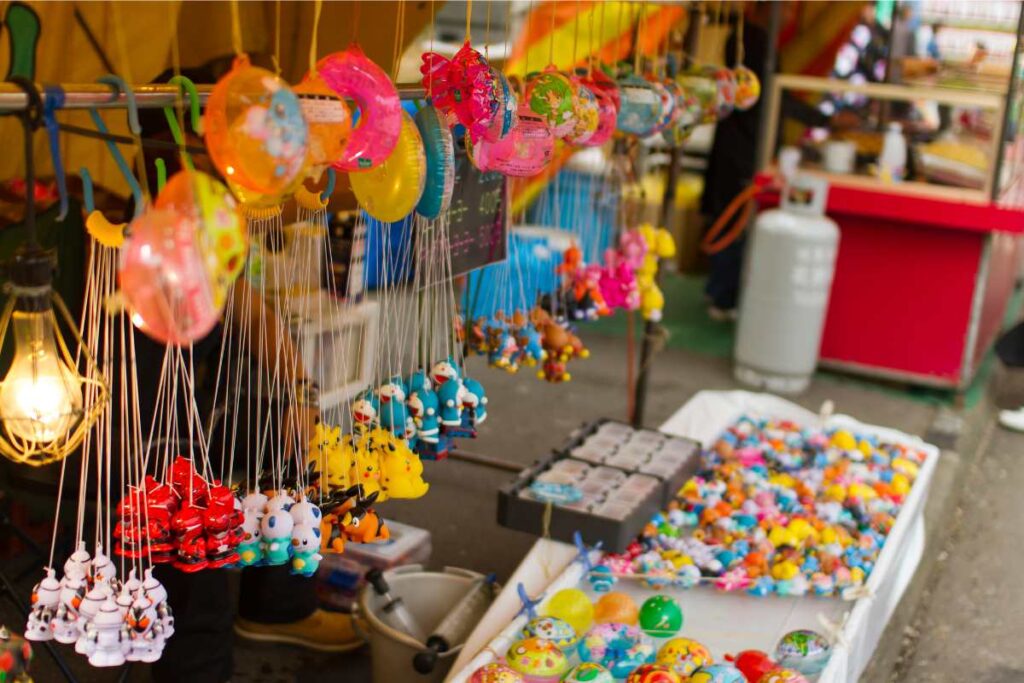
More than just a fireworks show, the event is full of cultural experiences and local charm.
・Many attendees rent or wear traditional yukata
・Colorful street food stalls line the streets with yakisoba, takoyaki, and kakigori
・Games and candy stands offer a nostalgic Japanese festival vibe
The atmosphere is lively, joyful, and perfect for making summer memories
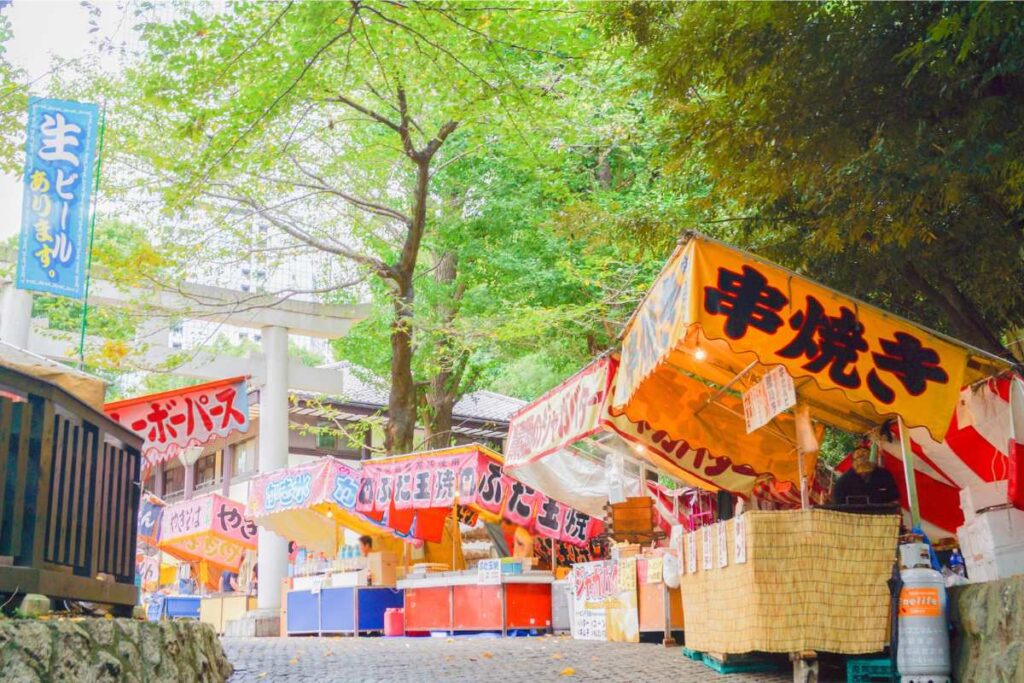
Tips for Visitors
Attending such a large-scale event in the middle of Tokyo requires planning and patience. For a smoother experience, here are some essential tips.
・Use public transportation—driving is not recommended
・Expect one-way pedestrian routes and restricted areas
・Carry drinks and towels—Tokyo is hot and humid in July
・Public toilets are available, but can get crowded
If you’re planning to watch from a free public area, it’s recommended to arrive at least 3–4 hours early to secure a good spot—especially near popular locations like Asakusa or Sakurabashi. Some people even start queuing or laying out mats in the early afternoon.
If you’d like to explore nearby attractions such as Sensoji Temple or Tokyo Skytree, consider doing so early in the day, before the festival crowd builds up.
After mid-afternoon, many streets around the Sumida River become restricted due to traffic and crowd control, making it difficult to move freely.
What the Day Looks Like: From Afternoon to Fireworks Finale
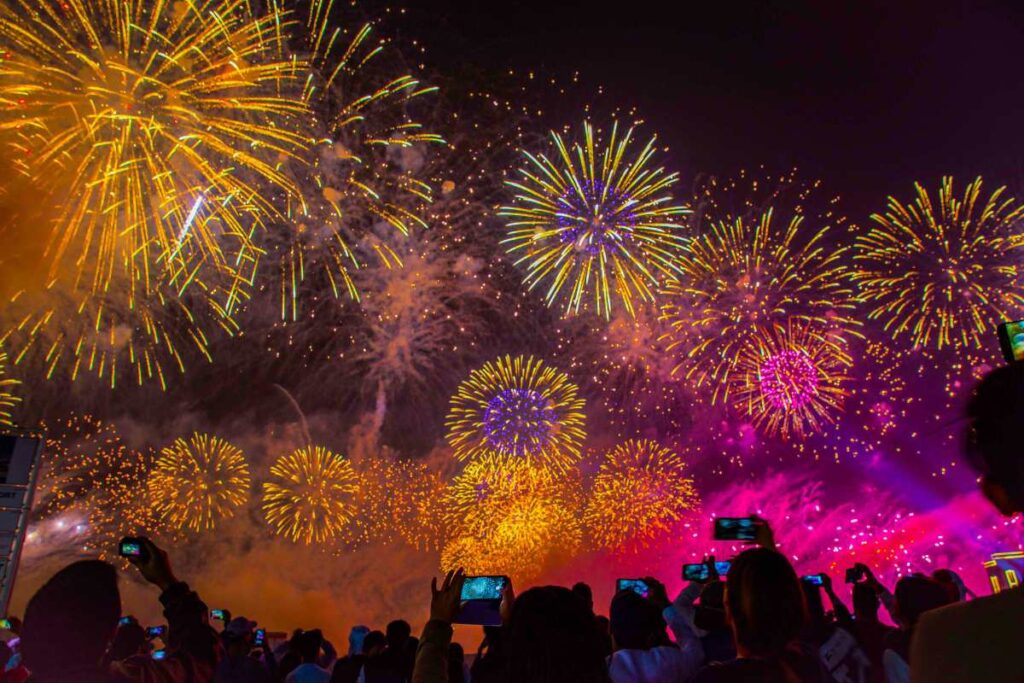
From early afternoon, the atmosphere around the Sumida River begins to change. Food stalls open, police start setting up barricades, and visitors in colorful yukata begin to gather.
By 4:00 or 5:00 PM, the streets grow increasingly crowded. People start laying out picnic mats, grabbing drinks and festival snacks, and looking for any available spot with a view.
Around 6:00 PM, major roads are closed to traffic, and one-way pedestrian routes are enforced. Movement becomes restricted, and some areas you could walk through earlier may suddenly be off-limits. Tensions can rise as people try to navigate through the crowds.
Once the fireworks begin at 7:00 PM, the mood shifts. The crowd quiets, everyone looks to the sky, and for 90 minutes the river glows with color and sound. It’s a shared moment of awe, even among strangers.
After the final burst, the peaceful mood vanishes. Crowds rush toward train stations and convenience stores. Public transportation is packed, and police work overtime to control the flow. It may take an hour or more just to get to a platform.
Planning ahead, staying flexible, and preparing for a long, crowded evening will help you enjoy the experience to the fullest.
“Is the Sumidagawa Fireworks Festival Worth Visiting?
Absolutely. The Sumidagawa Fireworks Festival is not just a visual spectacle—it’s a cultural journey.
From its historical roots to its vibrant street life and world-class pyrotechnics, the festival offers a deep and exciting look at Japanese summer traditions.
Plan ahead, dress light, arrive early, and enjoy one of Tokyo’s most iconic summer nights.
Official website: https://www.sumidagawa-hanabi.com/
